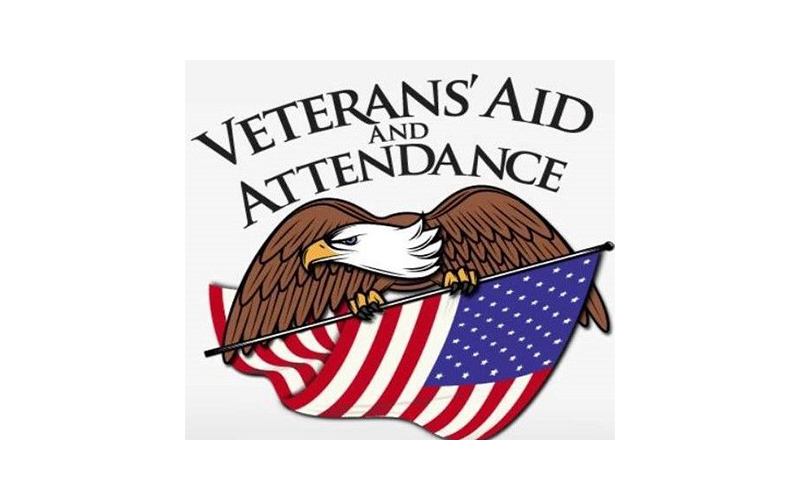Long-term care costs can add up quickly. For veterans and the surviving spouses of veterans who need in-home care or are in a nursing home, help may be available.
The Veterans Administration (VA) has an underused pension benefit called Aid and Attendance that provides money to those who need assistance performing everyday tasks. Even veterans whose income is above the legal limit for a VA pension may qualify for the Aid and Attendance benefit if they have large medical expenses for which they do not receive reimbursement.
Aid and Attendance is a pension benefit, which means it is available to veterans who served at least 90 days, with at least one day during wartime. The veteran does not have to have service-related disabilities to qualify. Veterans or surviving spouses are eligible if they require the aid of another person to perform an everyday action, such as bathing, feeding, dressing, or going to the bathroom. This includes individuals who are bedridden, blind, or residing in a nursing home.
To qualify a veteran (or spouse) must have a net worth limit of $130,773 (in 2021), which will increase each year with cost-of-living adjustments. But in the case of the VA, this number will include both the applicant’s assets and income. It will be indexed to inflation in the same way that Social Security increases. An applicant’s house (up to a two-acre lot) will not count as an asset even if the applicant is currently living in a nursing home. Applicants will also be able to deduct medical expenses from their income. This can include Medicare, Medigap, and long-term care insurance premiums; over-the-counter medications taken at a doctor’s recommendation; long-term care costs, such as nursing home fees; the cost of an in-home attendant that provides some medical or nursing services; and the cost of an assisted living facility. These expenses must be unreimbursed (in other words, insurance must not pay the expenses). The expenses should also be recurring, meaning that they should recur every month.
There is also a three-year look-back to determine if the veteran transferred assets in order to qualify for benefits. Applicants will have to disclose all financial transactions they were involved in for three years before the application. Applicants who transferred assets to put themselves below the net worth limit within three years of applying for benefits will be subject to a penalty period that can last as long as five years. This penalty is a period of time during which the person who transferred assets is not eligible for VA benefits. There are exceptions to the penalty period for fraudulent transfers and for transfers to a trust for a child who is unable to “self-support.”
The VA will determine a penalty period in months by dividing the amount transferred that would have put the applicant over the net worth limit by the maximum annual pension rate (MAPR) for a veteran with one dependent in need of aid and attendance. For example, assume the net worth limit is $130,773 and an applicant has a net worth of $117,773. The applicant transferred $30,000 to a friend during the look-back period. If the applicant had not transferred the $30,000, his net worth would have been $147,773, which exceeds the net worth limit by $17,000. The penalty period will be calculated based on $17,000, the amount the applicant transferred that put his assets over the net worth limit (147,773-130,773).
Annual Pension Rate (MAPR). Following are the MAPRs for 2021:
| Single veteran | $23,238 |
| Veteran with one dependent | $27,549 |
| Single surviving spouse | $14,934 |
| Surviving spouse with one dependent | $17,815 |
How it works. The amount a person receives depends on his or her income. The VA pays the difference between the veteran’s income and the MAPR. John, a single veteran, has income from Social Security of $16,500 a year and a pension of $12,000 a year, so his total income is $28,500 a year. He pays $20,000 a year for home health care, $1,122 a year for Medicare, and $1,788 a year for supplemental insurance, so his total medical expenses are $22,910. Subtracting his medical expenses from his income ($28,500 – $22,910), John’s countable income is $5,590. John could qualify for $17,648 ($23,238 – $5,590) in Aid and Attendance benefits.
To find out if you are eligible for Aid & Attendance benefits, contact your attorney.
To apply, contact a VA office near you.
For the VA’s Guide to Long-Term Care, click here.
Reach the Elder Law, Estate Planning and Probate Law experts at R. F. Meyer & Associates by calling 614-407-7900, by sending an email to [email protected], or by filling out the contact form at ElderLaw.US/Contact.
Other recent posts from our blog
https://www.elderlaw.us/should-i-purchase-long-term-care-insurance/
